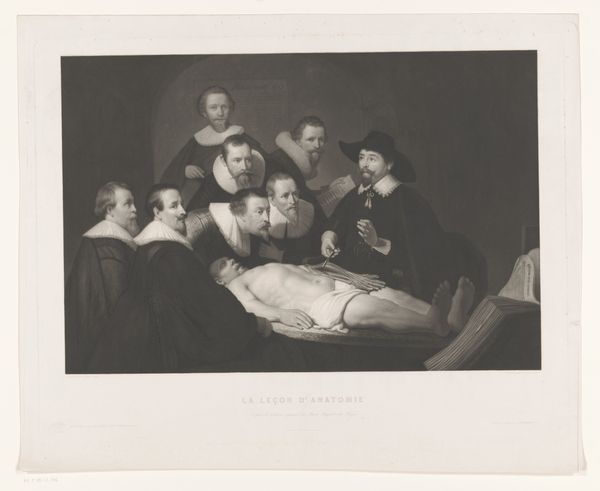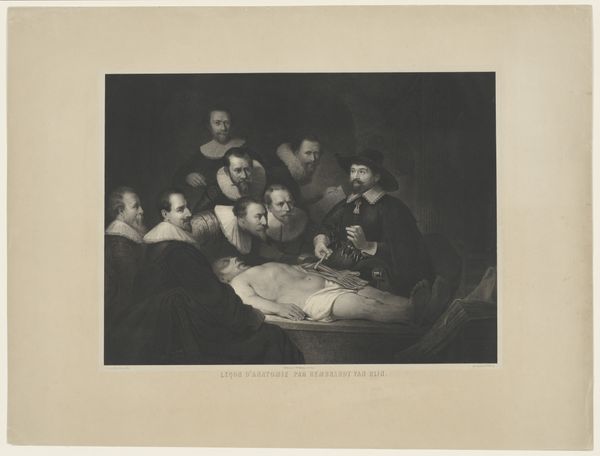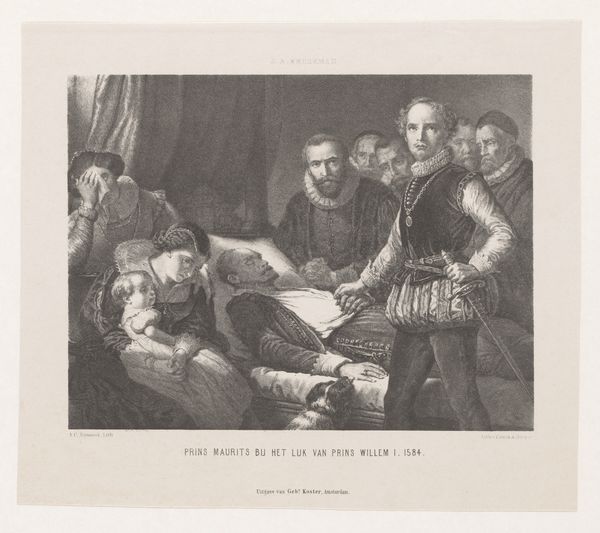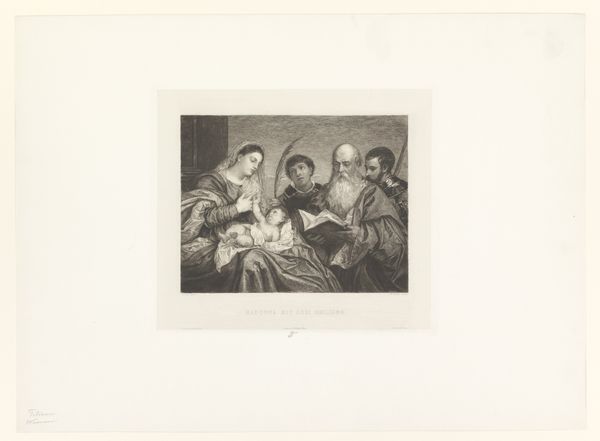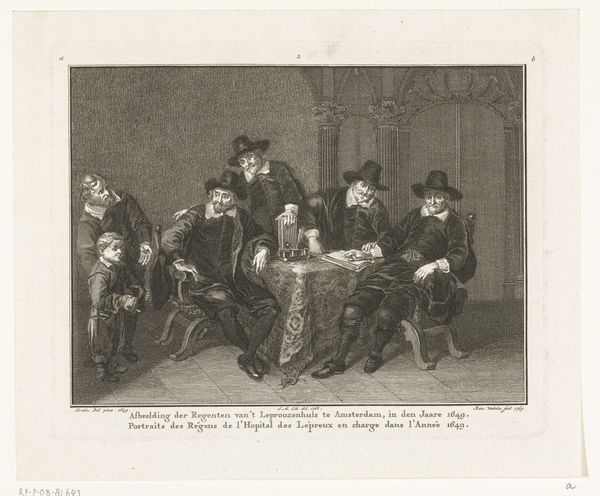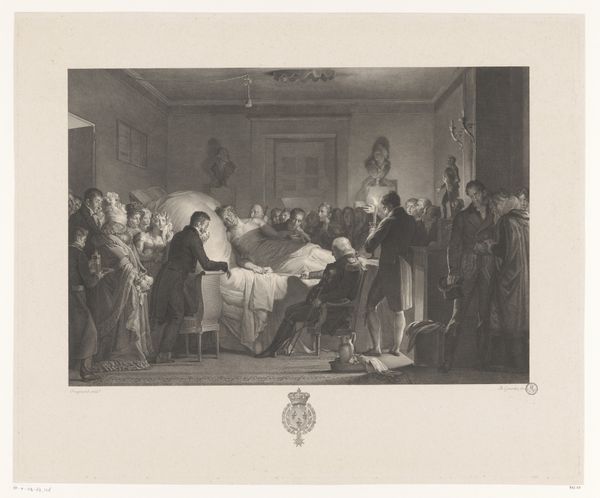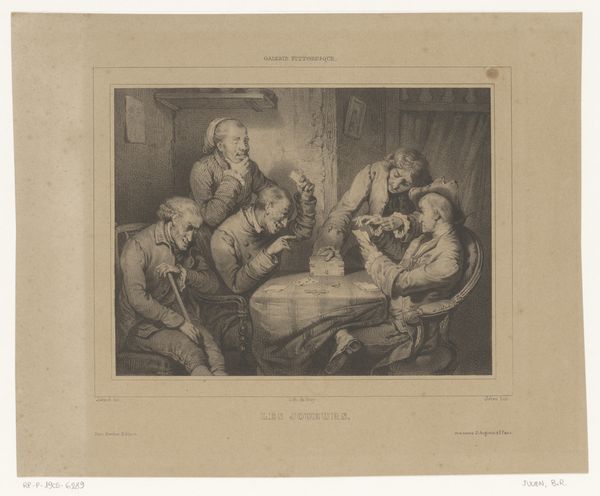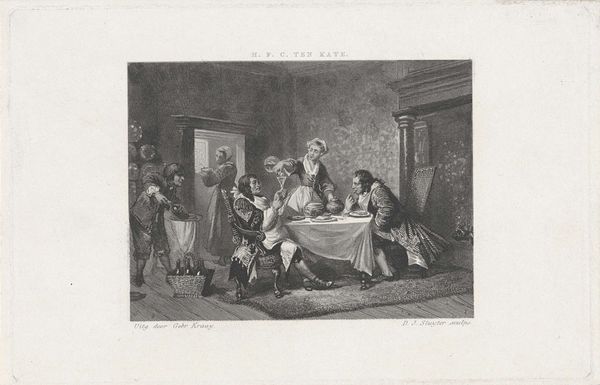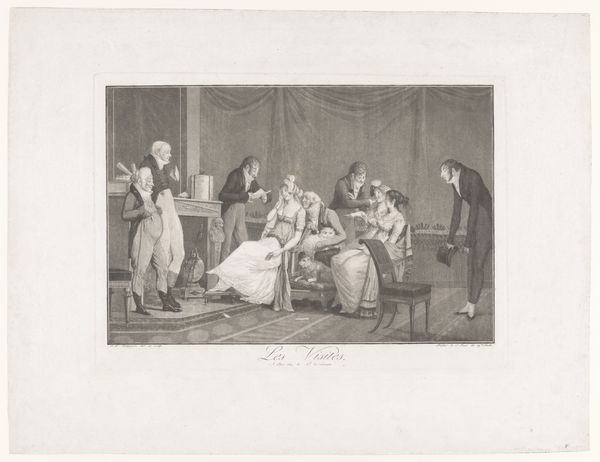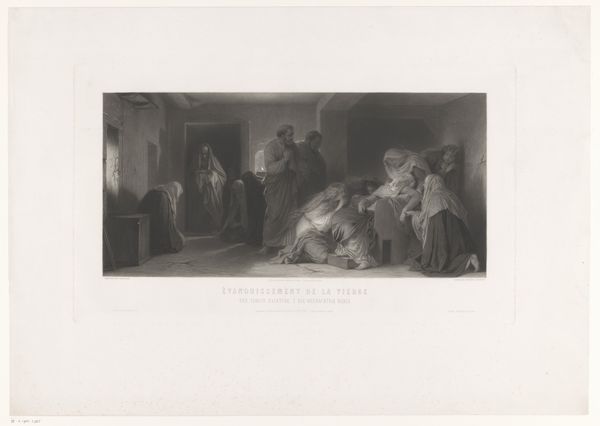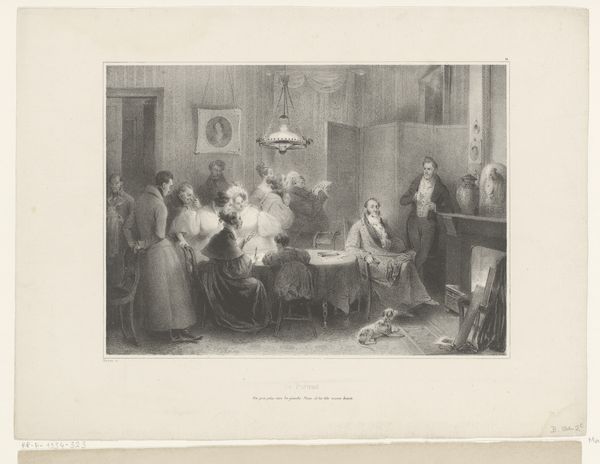
Dimensions: height 430 mm, width 550 mm
Copyright: Rijks Museum: Open Domain
Henri J. Zimmerman created this piece titled 'De anatomische les van Dr. Nicolaes Tulp', using a technique that allowed for the wide distribution of images. Zimmerman lived in an era marked by significant advancements in medical science and the professionalization of medicine. This piece captures a pivotal moment, where the body of an executed criminal becomes a site for public learning. What does it mean to display this scene? The racial and economic status of the cadaver would have been vastly different from those present in the room. The men surrounding the body represent the elite class. The body on display serves as a stark reminder of the social hierarchies and inequalities that existed. The act of dissecting a human body, once taboo, became a symbol of scientific progress, yet it also raises questions about the ethics of using marginalized bodies for the advancement of knowledge. Zimmerman’s piece compels us to consider who benefits from such displays and at whose expense knowledge is gained.
Comments
No comments
Be the first to comment and join the conversation on the ultimate creative platform.
